Nick Turns Eleven September 2010 (Page One)
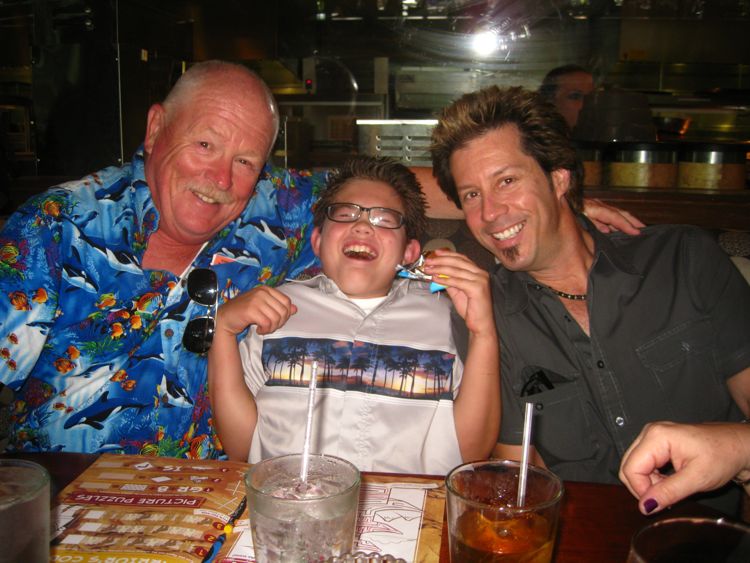
New meal at PF Changs... Squashed Nick
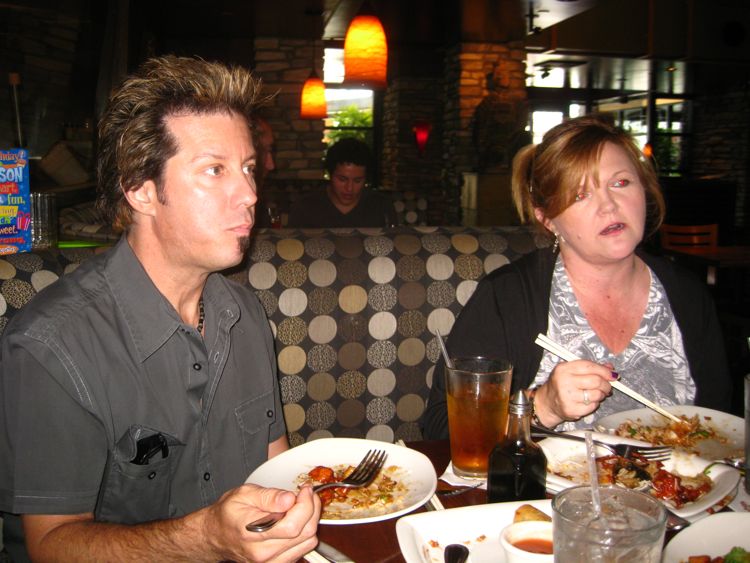
The table was a tad small for this big a meal!
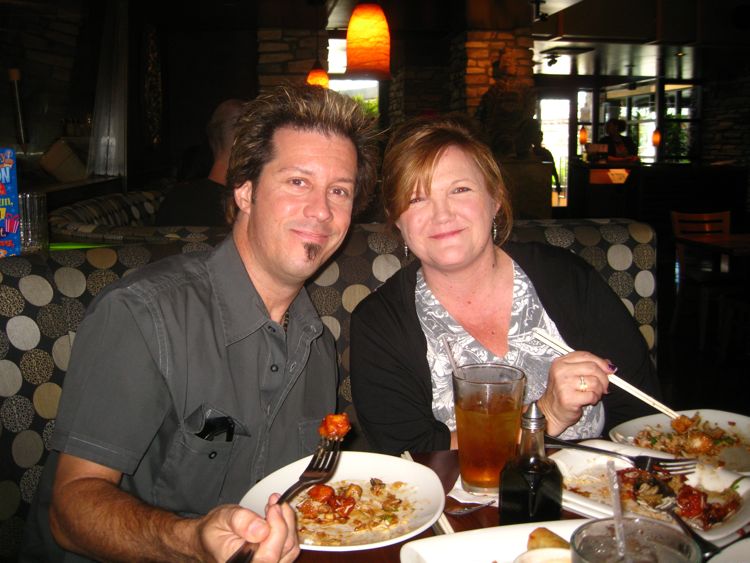
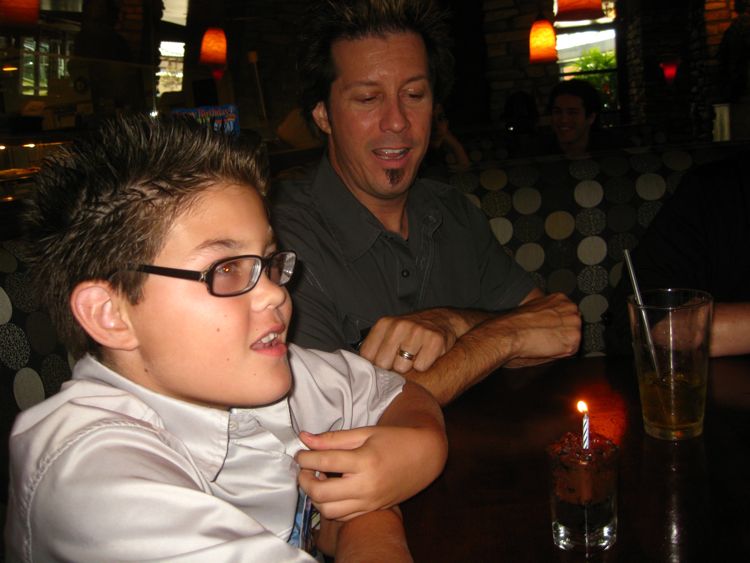
Little birthday cake. red Velvet Cake
Did you know? - A Red velvet cake is a cake with a dark red, bright red or red-brown color. It is usually prepared as a layer cake somewhere between chocolate and vanilla in flavor, topped with a creamy white icing. Common ingredients are buttermilk, butter, flour, cocoa, and red food coloring or beetroot; although beetroot is traditionally used, many prefer food coloring since it is seen as more appealing. The amount of cocoa used varies in different recipes. A typical frosting is a butter roux (also known as a cooked flour frosting). Cream cheese or buttercream frostings are also used.
James Beard's 1972 reference American Cookery describes three red velvet cakes varying in the amounts of shortening and butter. All use red food coloring, but the reaction of acidic vinegar and buttermilk tends to better reveal the red anthocyanin in the cocoa. Before more alkaline "Dutch Processed" cocoa was widely available, the red color would have been more pronounced. This natural tinting may have been the source for the name "Red Velvet" as well as "Devil's Food" and similar names for chocolate cakes.
While foods were rationed during World War II, bakers used boiled beets to enhance the color of their cakes. Boiled grated beets or beet baby food are found in some red velvet cake recipes, where they also serve to retain moisture.
A red velvet cake was a signature dessert at the Waldorf-Astoria Hotel in New York City during the 1920s. According to a common urban legend of the 1960s a woman once asked for the recipe for the cake, and was billed a large amount. Indignant, she spread the recipe in a chain letter.
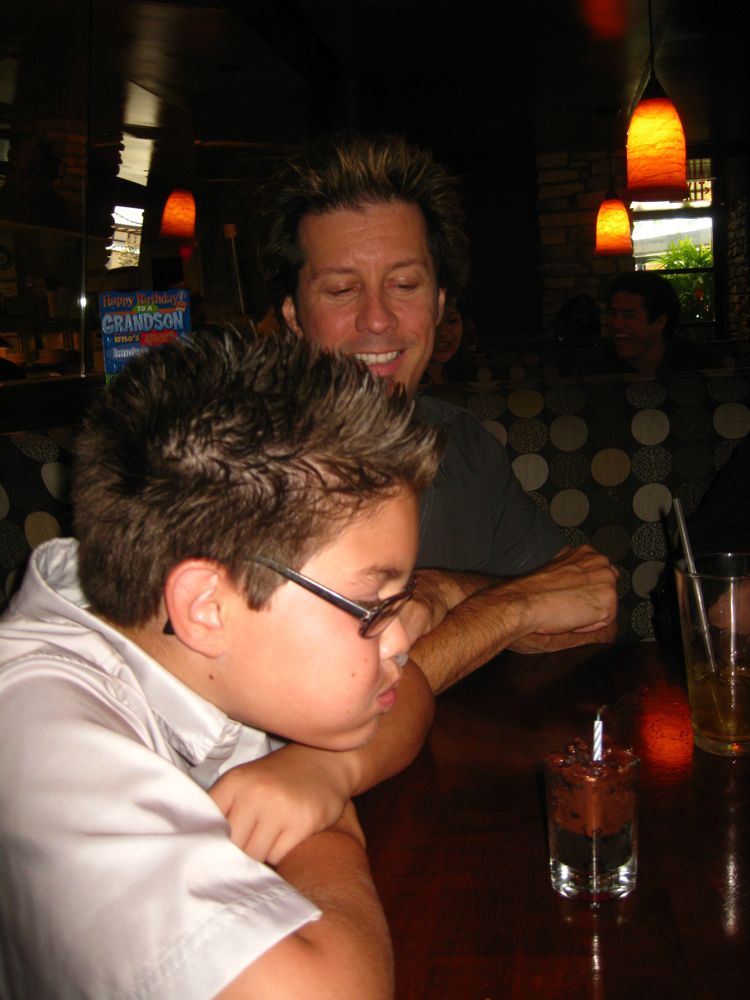
Took a lot of wind to blow out the candle
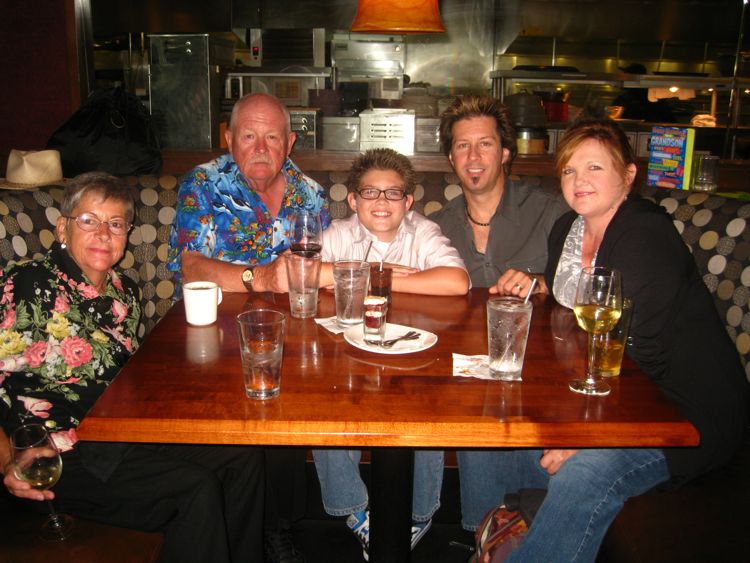
"We are family... "
Time For A Leisurely Stroll Along The Rainbow Harbor Waterfront
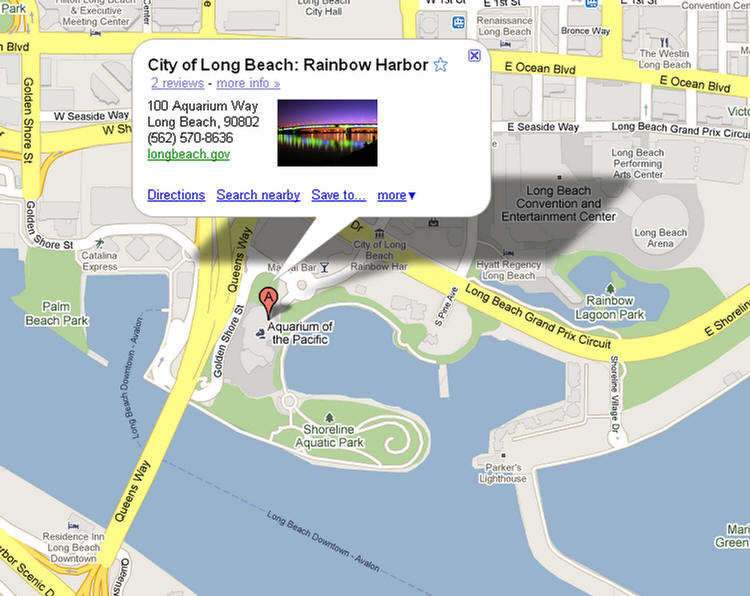
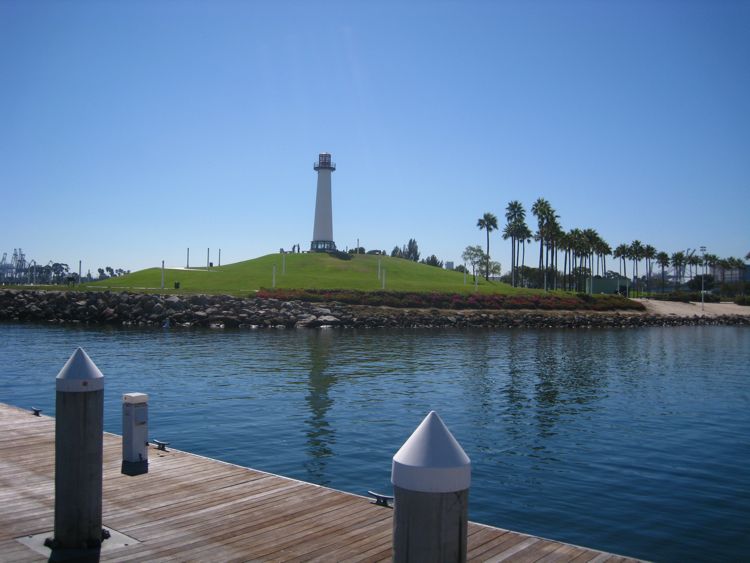
Did you know? - The more traditional-looking lighthouse at Rainbow Harbor is not primarily a navigation device. It was built by the Long Beach Lions Club as a symbol of their fundraising for the visually impaired. The structure was dedicated in December of 2000. The Long Beach harbor master's office is located in the base of the lighthouse.
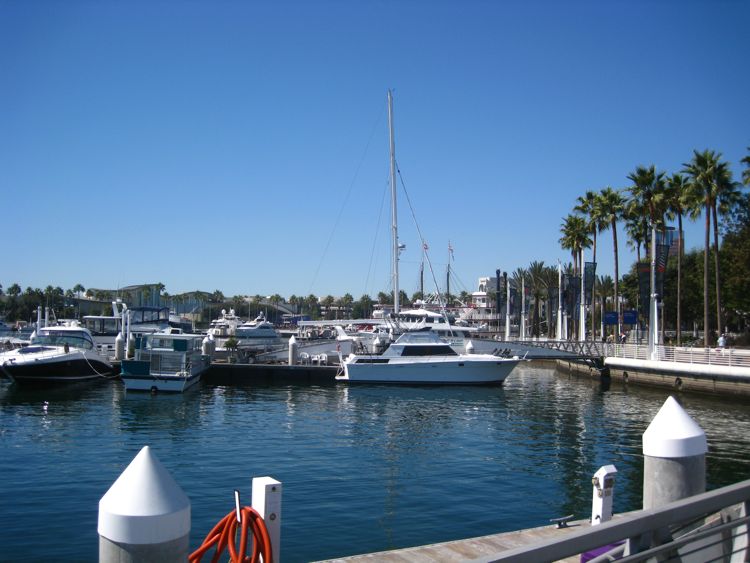
A beautiful day
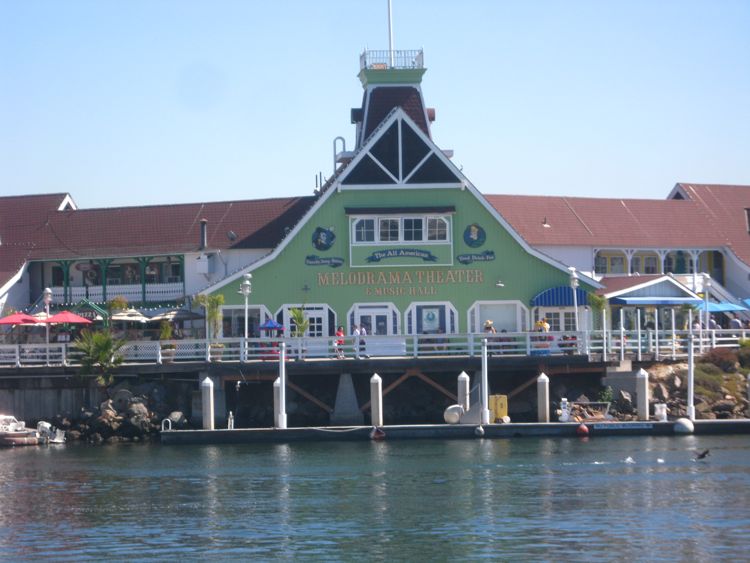
This will be a surprise for Nick later on
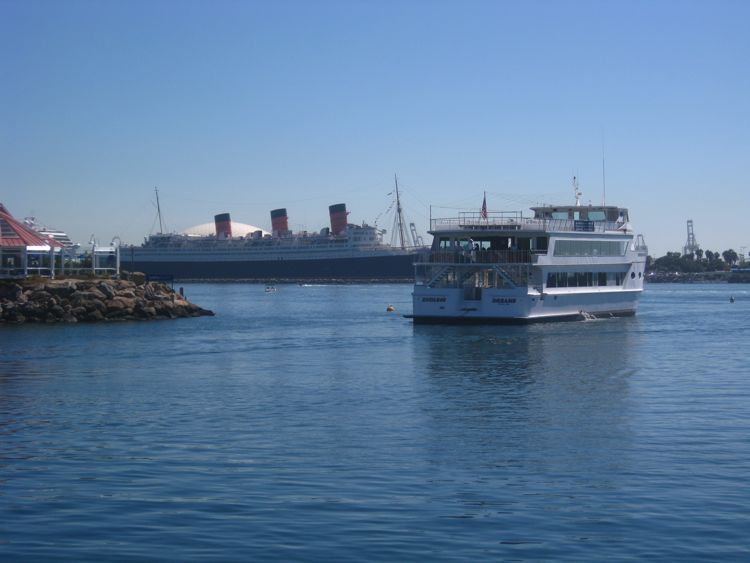
Boas come and go all day
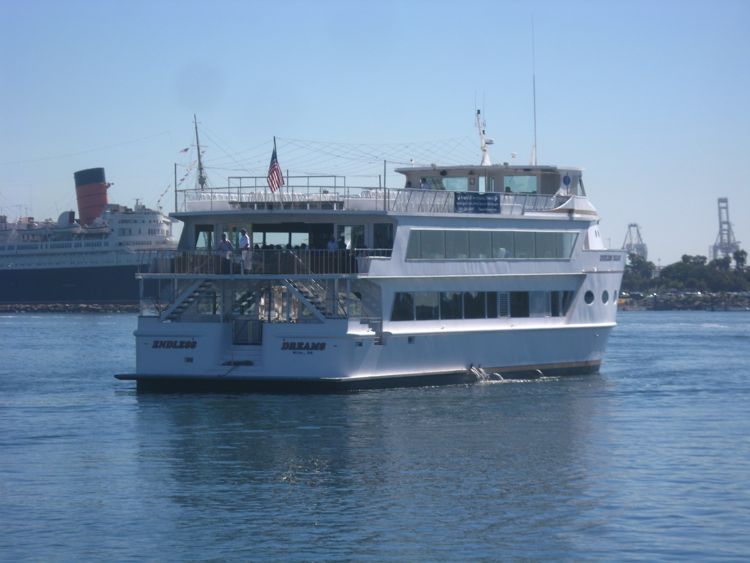
He is backing in... Took almost ten minutes
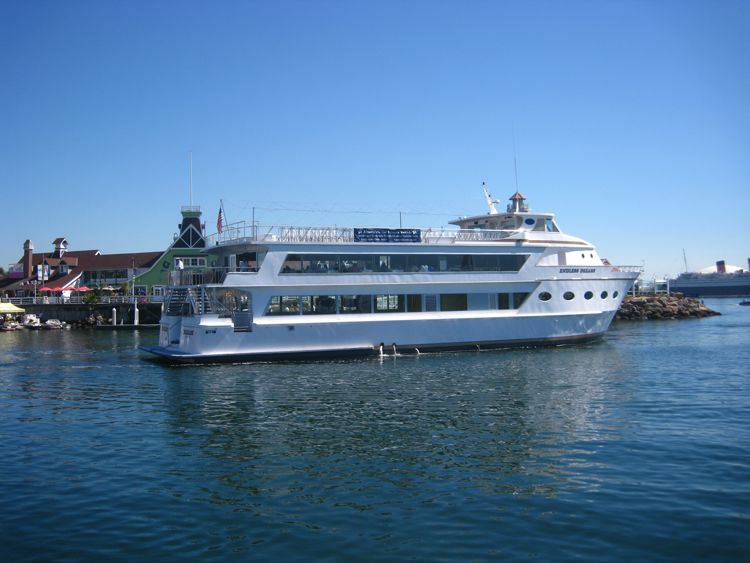
Did you know? - Much of the city's activity is now centered along the waterfront. With 3,400 slips, Long Beach Marina is the largest municipally owned marina in the country.
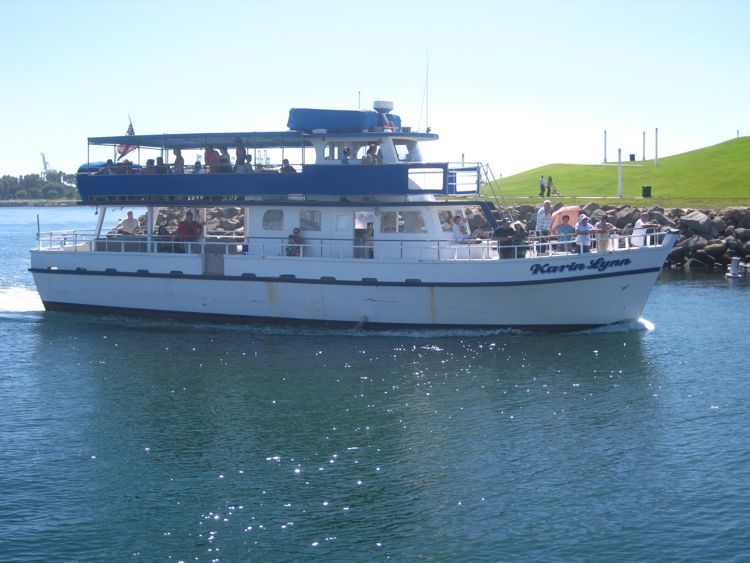
Harbor cruises are quite interesting
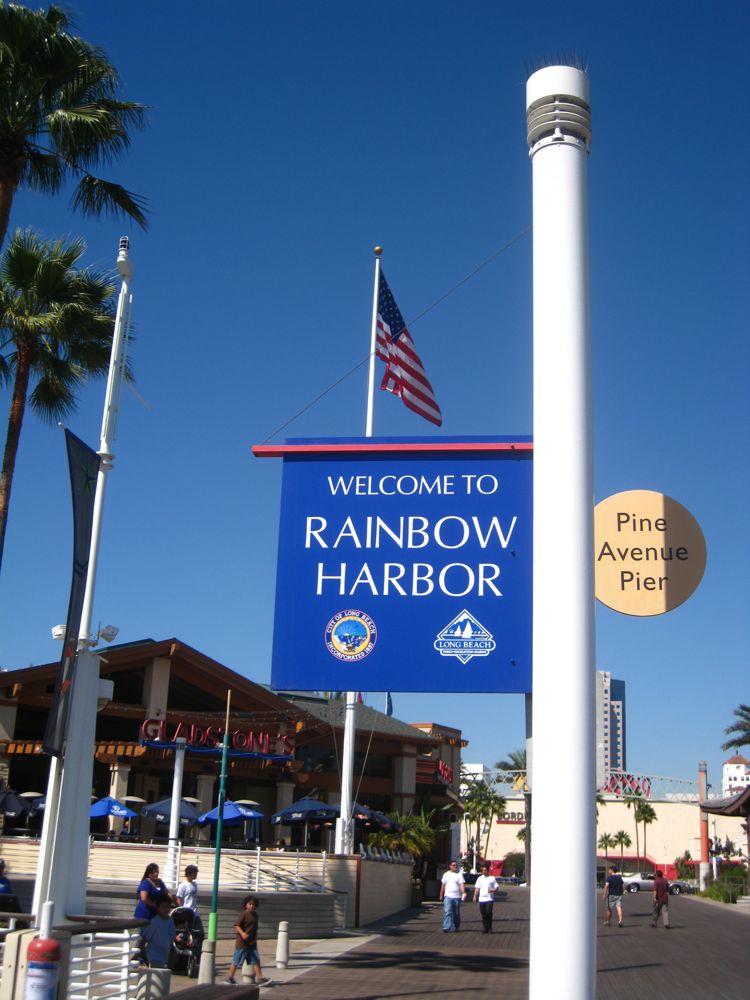
Located 22 miles south of Los Angeles, Long Beach stretches along five and a half miles of California coast
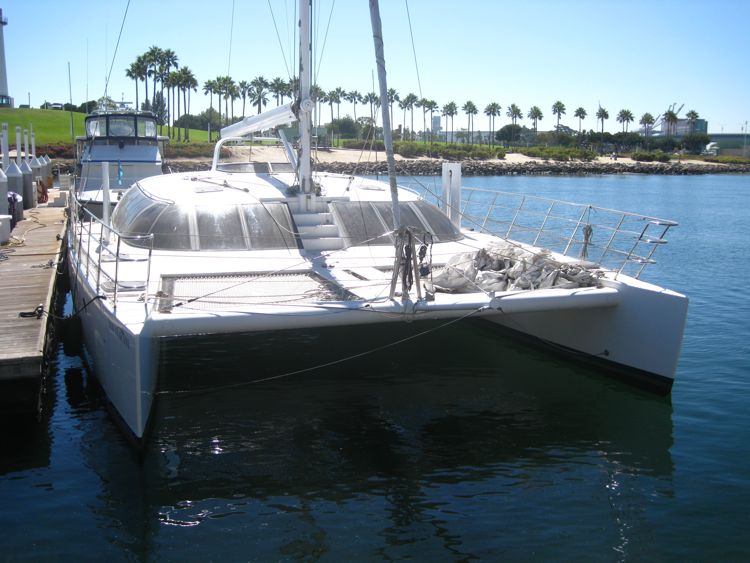
Catamarins are everywhere
Did you know? - A catamaran (from Tamil kattumaram "kattumaram") is a type of multihulled boat or ship consisting of two hulls, or vakas, joined by some structure, the most basic being a frame, formed of akas. Catamarans can be sail- or engine-powered.
Catamarans are a relatively recent introduction to the design of boats for both leisure and sport sailing, although they have been used since time immemorial among the paravas, a fishing community in the southern coast of Tamil Nadu, India, and independently in Oceania, where Polynesian catamarans and outrigger canoes allowed seafaring Polynesians to settle the world's most far-flung islands.

The area is quite pretty
Maybe We Ought Visit The Whales?
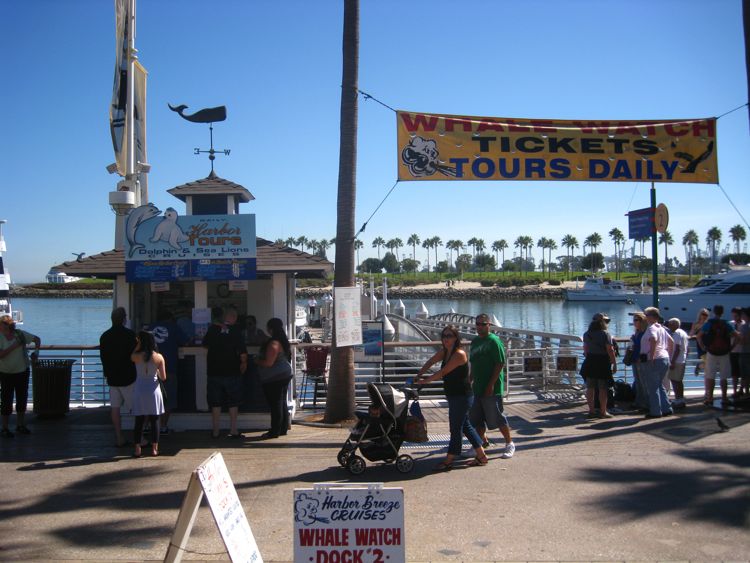
Did you know? - Whale watching is the practice of observing whales and other cetaceans in their natural habitat. Whales are watched most commonly for recreation (cf. bird watching) but the activity can also serve scientific or educational purposes. While individuals do organize private trips, whale watching is primarily a commercial activity, estimated to be worth up to $2.1 billion per annum worldwide to whale watching operations, employing around 13,000 workers.
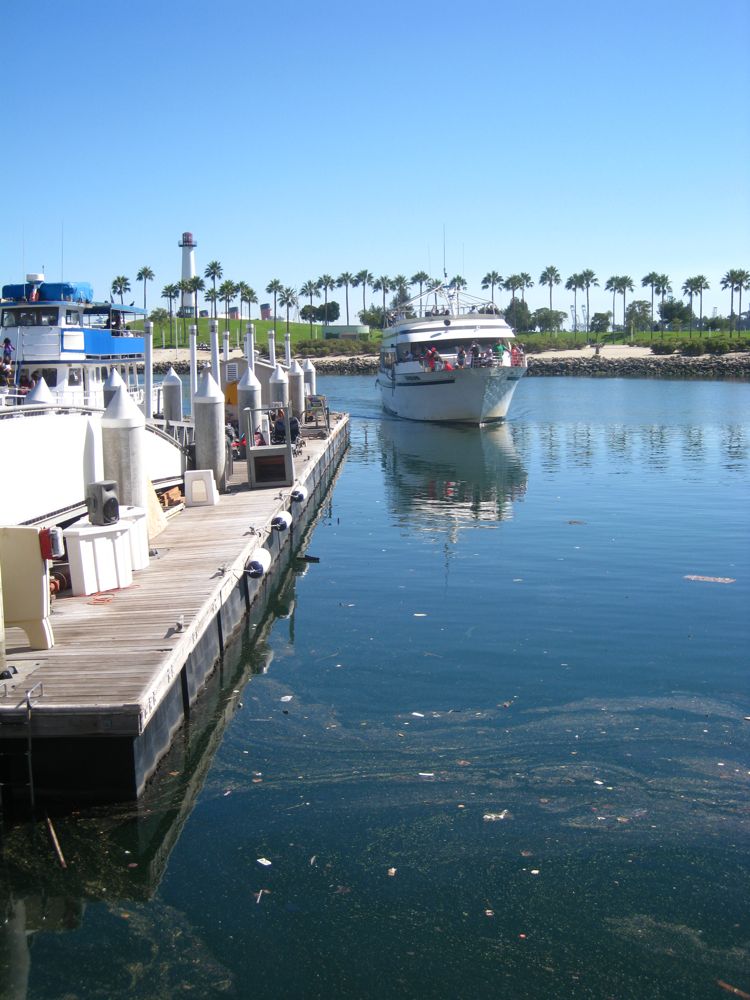
They have several ships
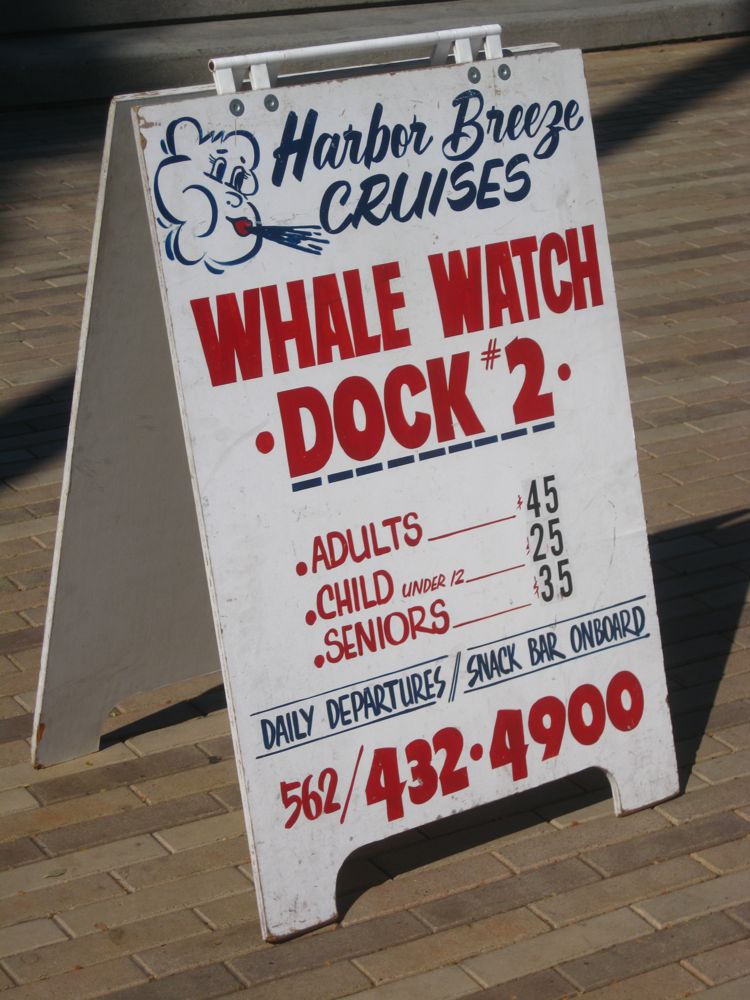
Did you know? - Organized whale watching dates back to 1950 when the Cabrillo National Monument in San Diego was declared a public venue for observing Gray Whales. In 1955 the first water-based whale watching commenced in the same area, charging customers $1 per trip to view the whales at closer quarters. The spectacle attracted 10,000 visitors in its first year and many more in subsequent years. The industry spread throughout the western coast of the United States over the following decade.
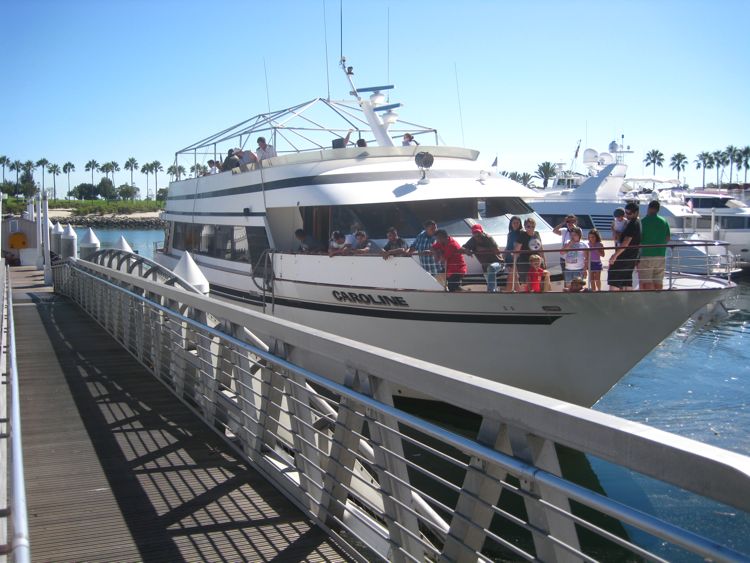
Nope... Not this one
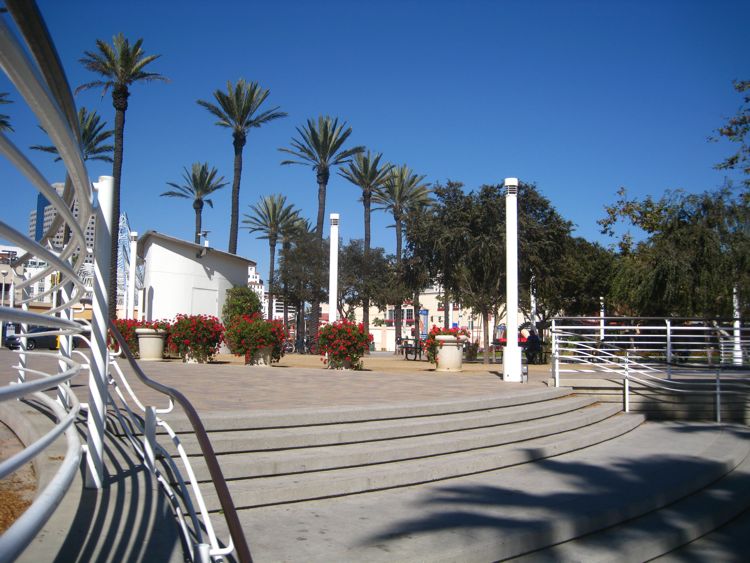
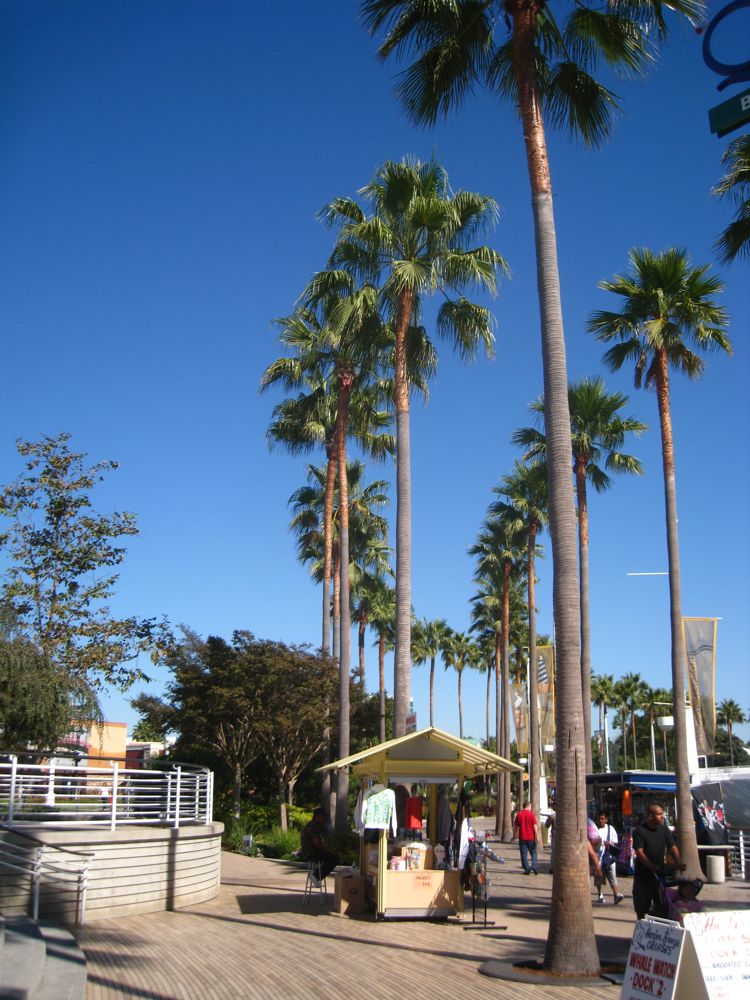
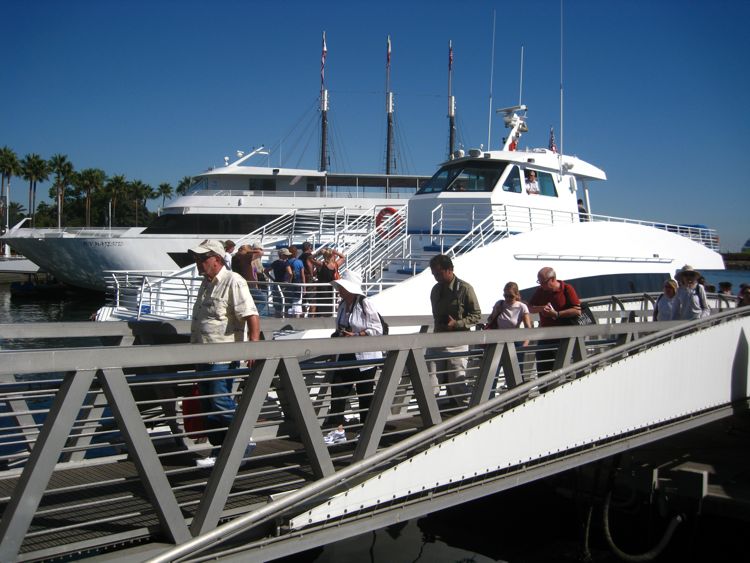
This one!
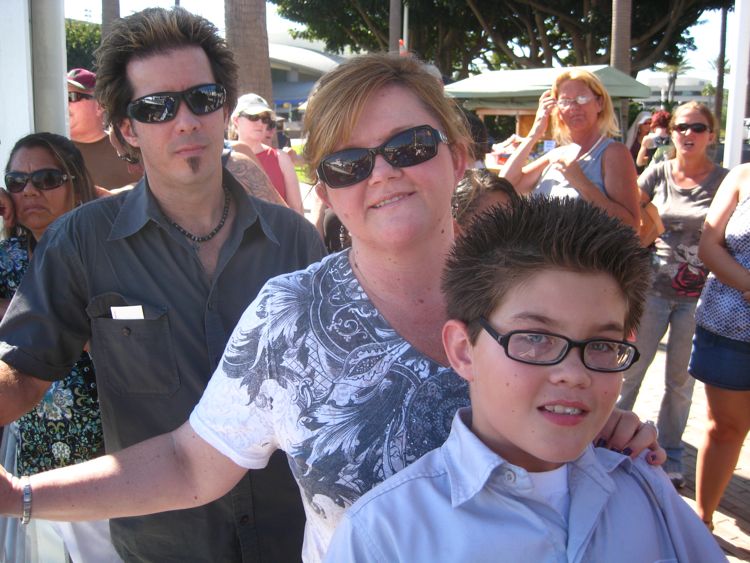
Patience is a virtue
On Board... Time For Wine
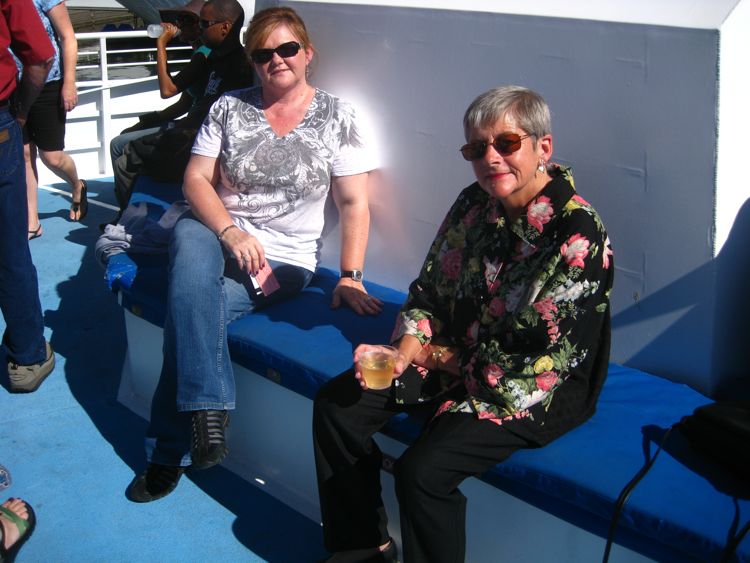
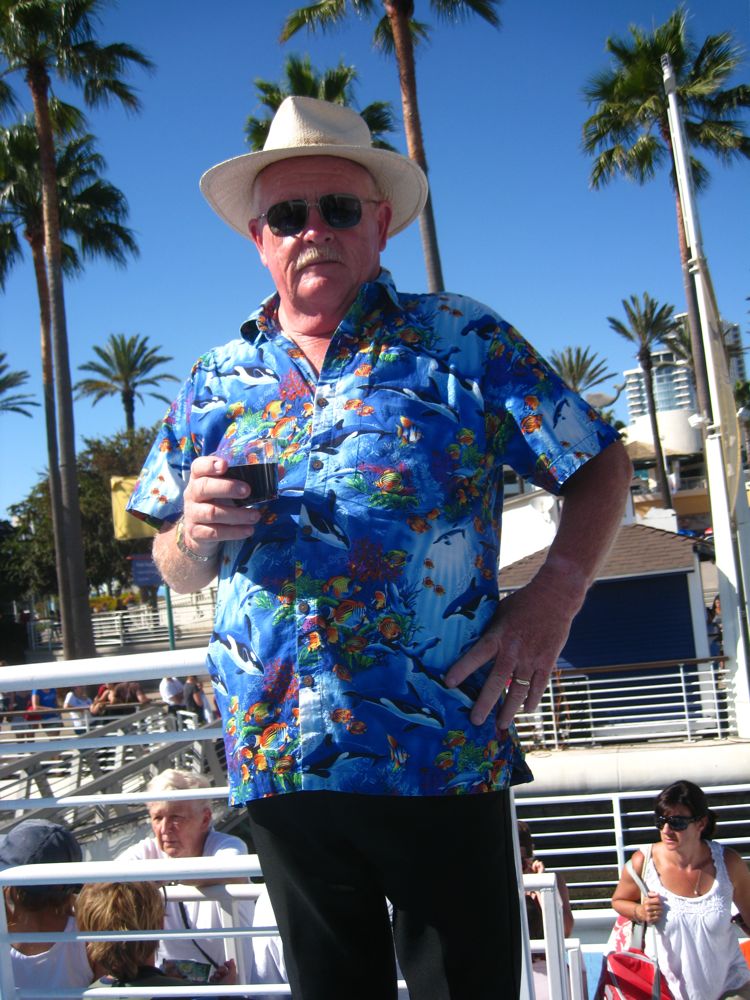
The Captain gets his dose of pointing/finding fluid
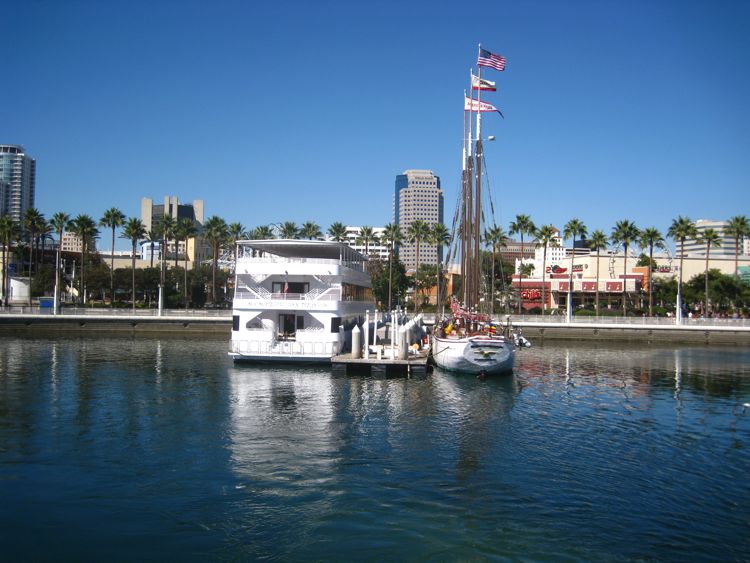
Off we go!
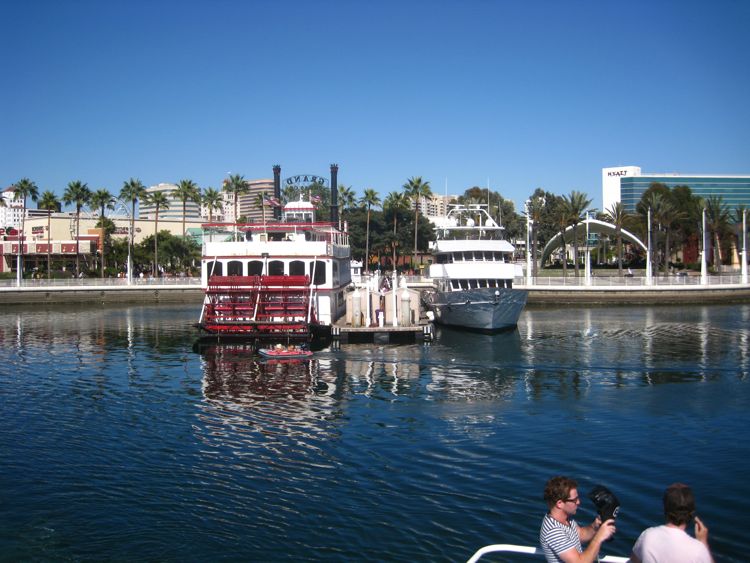
The paddle wheeler is still an interesting ship
Did you know? - The paddle wheel is a large wheel, generally built of a steel framework, upon the outer edge of which are fitted numerous paddle blades (called floats or buckets). The bottom quarter or so of the wheel travels underwater. Rotation of the paddle wheel produces thrust, forward or backward as required. More advanced paddle wheel designs have featured feathering methods that keep each paddle blade oriented closer to vertical while it is in the water; this increases efficiency. The upper part of a paddle wheel is normally enclosed in a paddlebox to minimise splashing.
The use of a paddle wheel in navigation appears for the first time in the mechanical treatise of the Roman engineer Vitruvius (De architectura, X 9.5-7), where he describes multi-geared paddle wheels working as a ship odometer. The first mention of paddle wheels as a means of propulsion comes from the 4th–5th century military treatise De Rebus Bellicis (chapter XVII), where the anonymous Roman author describes an ox-driven paddle-wheel warship.
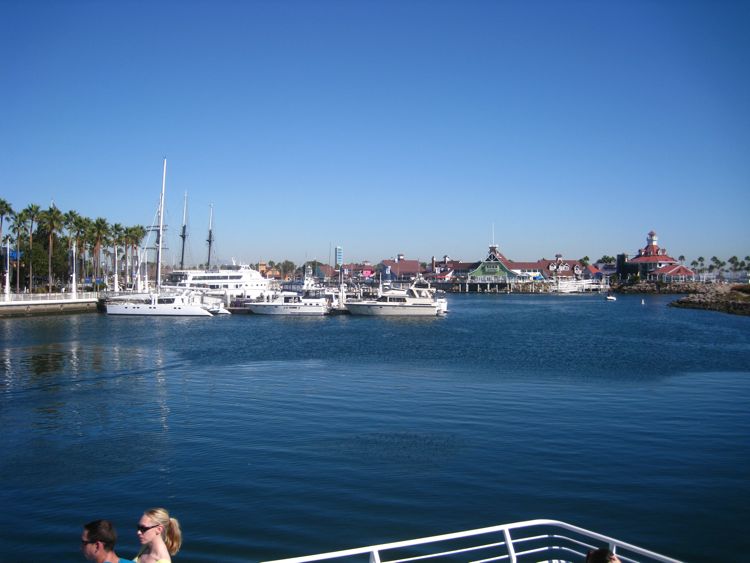
Bye Rainbow Harbor, Hello open sea
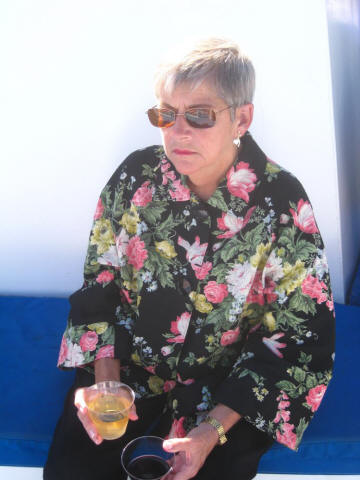
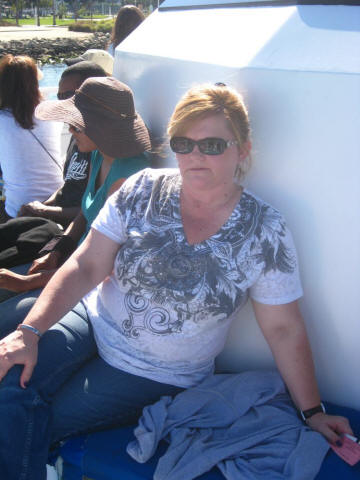
No she is not mixing her drinks... She is holding Paul's
The Cruise Ship Leaves In About Three Hours
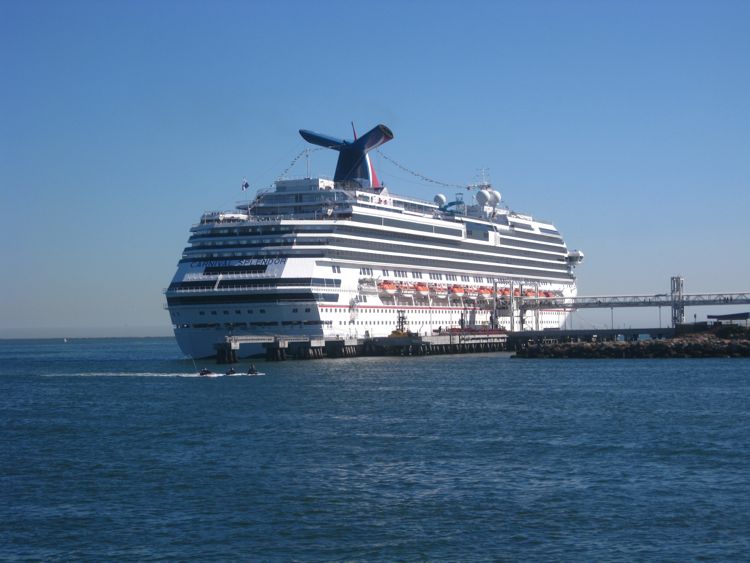
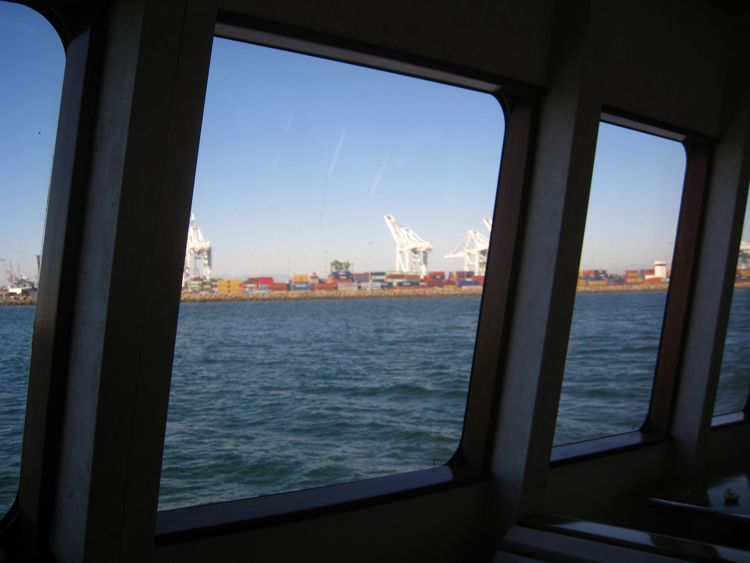
It was noisey inside
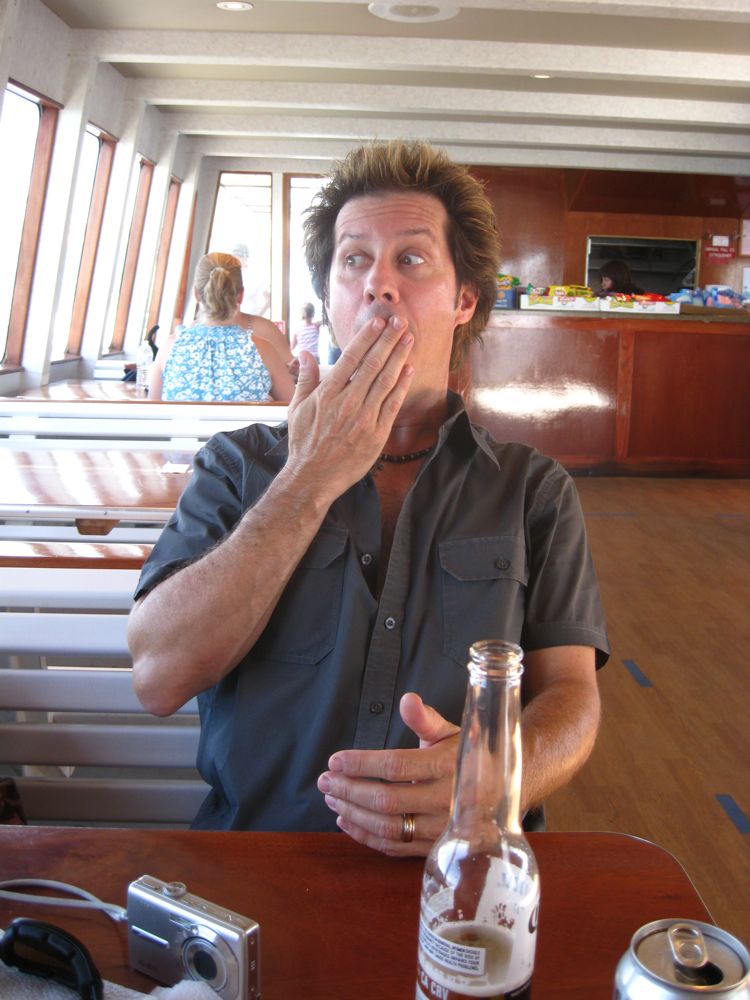
Oops!
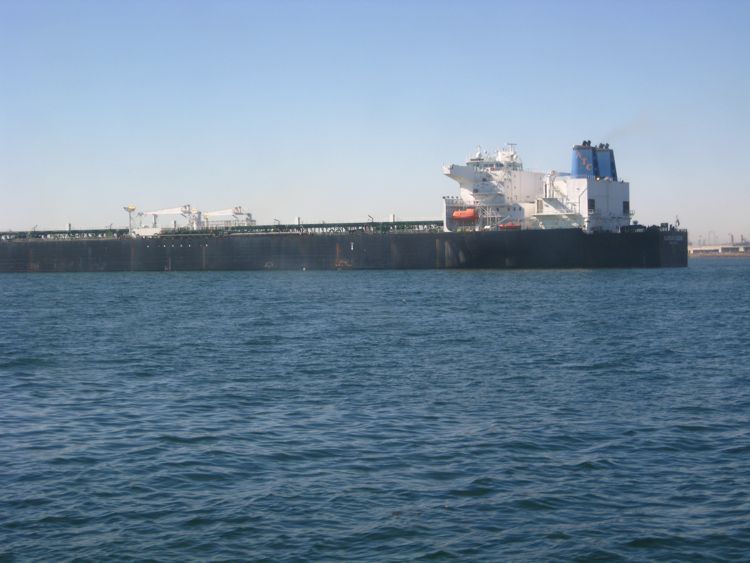
Huge tankers
Did you know? - Tankers are a relatively new concept, dating from the later years of the 19th century. Before this, technology had simply not supported the idea of carrying bulk liquids. The market was also not geared towards transporting or selling cargo in bulk, therefore most ships carried a wide range of different products in different holds and traded outside fixed routes. Liquids were usually loaded in casks—hence the term "tonnage", which refers to the volume of the holds in terms of the amount of tuns of wine (casks) that could be carried. Even potable water, vital for the survival of the crew, was stowed in casks. Carrying bulk liquids in earlier ships posed several problems:
- The holds: on timber ships the holds were not sufficiently water, oil or air-tight to prevent a liquid
cargo from spoiling or leaking. The development of iron and steel hulls solved this problem.
- Loading and Discharging: Bulk liquids must be pumped - the development of efficient pumps and piping
systems was vital to the development of the tanker. Steam engines were developed as prime-movers for early
pumping systems. Dedicated cargo handling facilities were now required ashore too - as was a market for
receiving a product in that quantity. Casks could be unloaded using ordinary cranes, and the awkward nature of
the casks meant that the volume of liquid was always relatively small - therefore keeping the market more
stable.
- Free Surface Effect: Describes the effect a large surface area of liquid in a ship will have on the stability of that ship. See Naval Architecture. Liquids in casks posed no problem, but one tank across the beam of a ship could pose a stability problem. Extensive sub-division of tanks solved this problem.
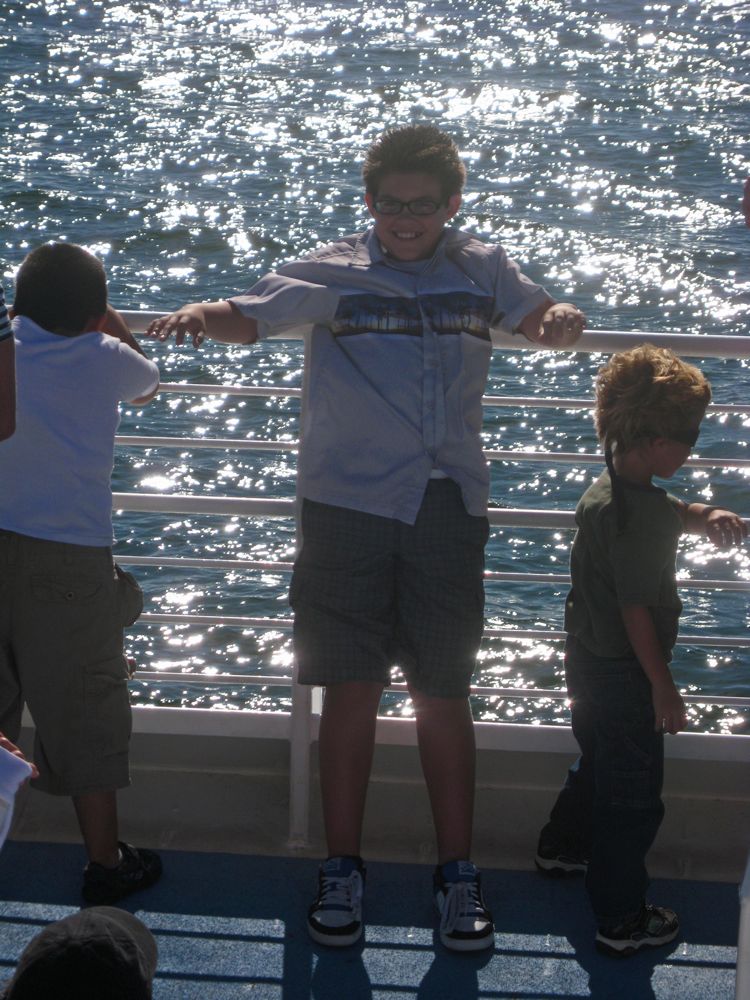
Enjoying the ride
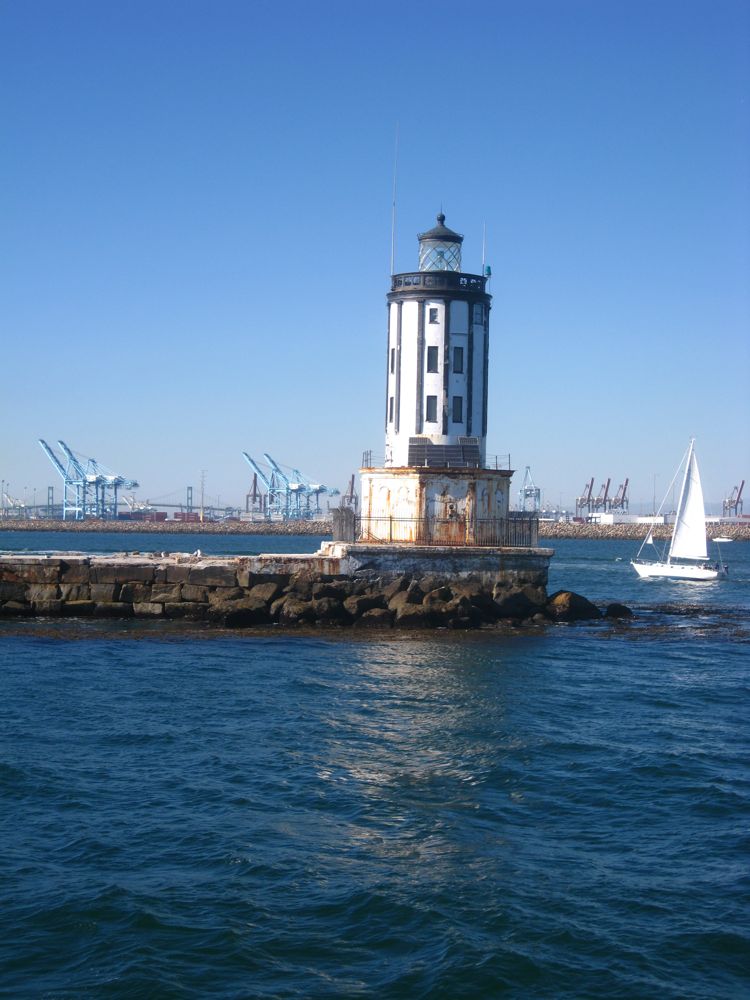
The real lightouse... Angels Gate
Did you know? - The Los Angeles Harbor Lighthouse, also known as the "Angel's Gate" light, welcomes ships into the harbor of the City of Angels, Los Angeles. Don't let the name confuse you, Los Angeles Harbor is nowhere near downtown Los Angeles, but is located in San Pedro several miles south of the city's cluster of skyscrapers. The lighthouse, completed in 1913 at a cost of just under $36,000, was built around twelve steel columns and sits at the end of the 9,250-foot San Pedro breakwater. The bottom of the lighthouse is octagonal, while the top three stories are cylindrical. The twelve columns, now covered with black pilasters, give the lighthouse a Romanesque feel. No other lighthouse was ever built to this design.
The bottom story of the lighthouse originally housed the station's fog signal equipment along with water and fuel tanks, and the floor above this was used for storage. The top two stories of the tower contained sleeping quarters for a four-man crew, whose families were housed on shore, while a kitchen and pantry were located on the tower's third story. Atop the lighthouse is a cylindrical, helical-bar lantern room whose light is exhibited at a focal plane of fifty-nine feet.
The original plan for the lighthouse was a wooden, square, two-story building like those constructed for Oakland Harbor and Southampton Shoals. Fortunately, the plans were changed and a more stout structure was built, as a wooden structure never would have survived the various forces which seemed bent on destroying the light. For five days one year, the lighthouse was battered by large breakers, spawned by a gale. After the storm, the keepers dropped a plumb line from the lantern gallery proving their suspicion that the storm had given the tower a slight lean shoreward. Over the years, rust in the supporting columns has also contributed to the lighthouse's lean.
In another incident that occurred in the early 1930s, a keeper was startled one night, when a tremendous blow was delivered to the base of the tower. Scrambling to the window, the amazed keeper saw the silhouette of a large Navy ship, which had rammed the breakwater. The ship received damage to its hull and propeller and had to make a trip to Mare Island for repairs.
Long Beach was hit by an earthquake in 1933 that killed 115 people. The keeper of the L.A. Harbor Lighthouse at the time reported that it shook violently for about twenty seconds and that mercury slopped out of the pool used to float the lens, but no significant damage was done to the tower.
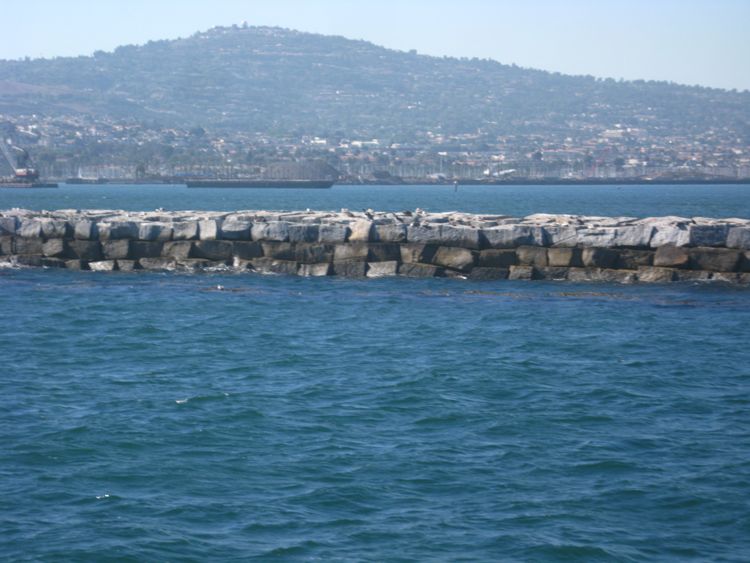
Good sized stone on the breakwater
Did you know? - Did you know that before WWII, Long Beach was known as the “Waikiki of Southern California”? We had waves!! There was even a surfing contest here in 1939. So what happened to it since then?
The breakwaters were built: The Long Beach breakwater was built as a part of the deepwater port project. The construction of the San Pedro and Middle Breakwaters started in 1899 and 1932, and completed in 1912 and 1942 respectively. The construction of the Long Beach Breakwater started in 1941, but was halted in 1943 due to WWII. Construction was resumed in 1946, and completed in 1949. The U.S. Navy moved in to the port of Long Beach in 1940 and used the breakwaters for military purposes.
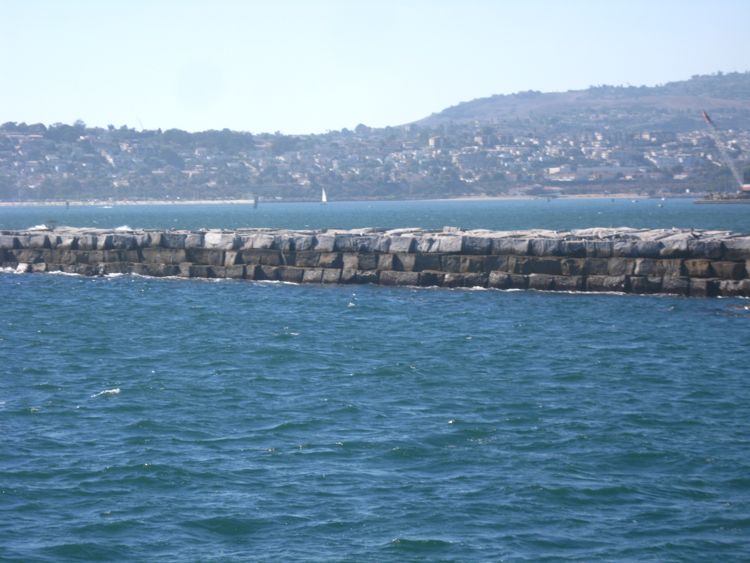
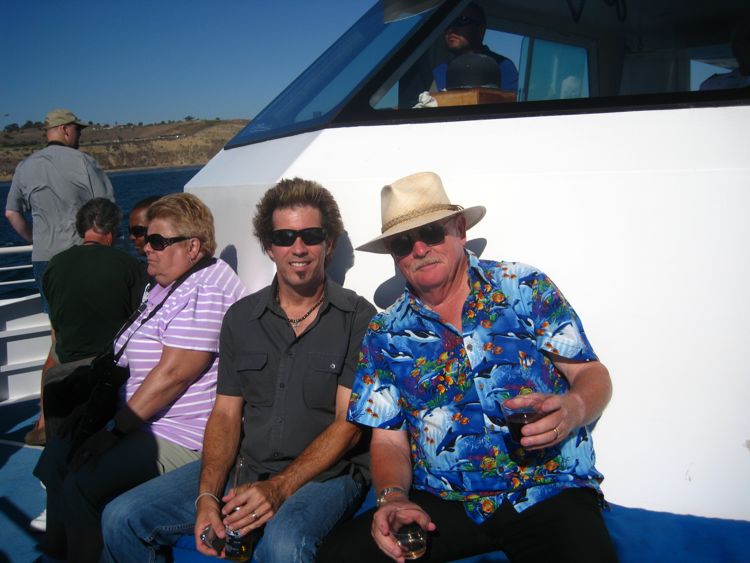
The boys enjoying the great out of doors... Pal DOES mix his drinks
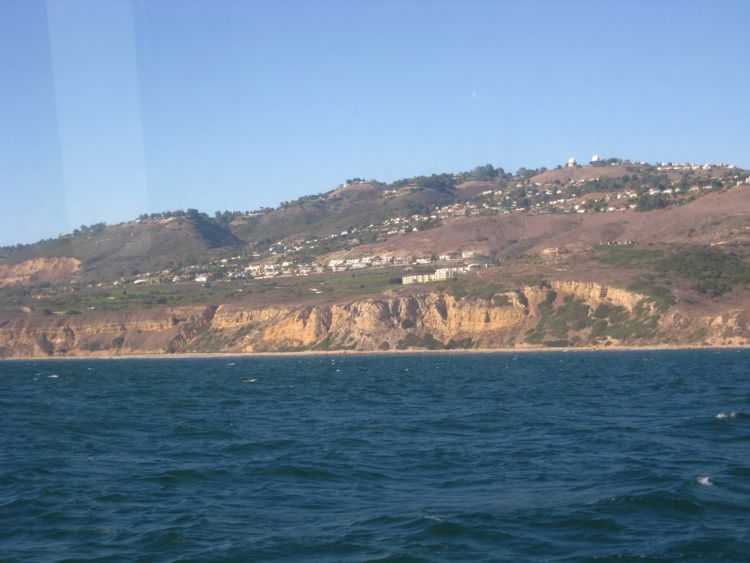
Palos Verdes Penninsula

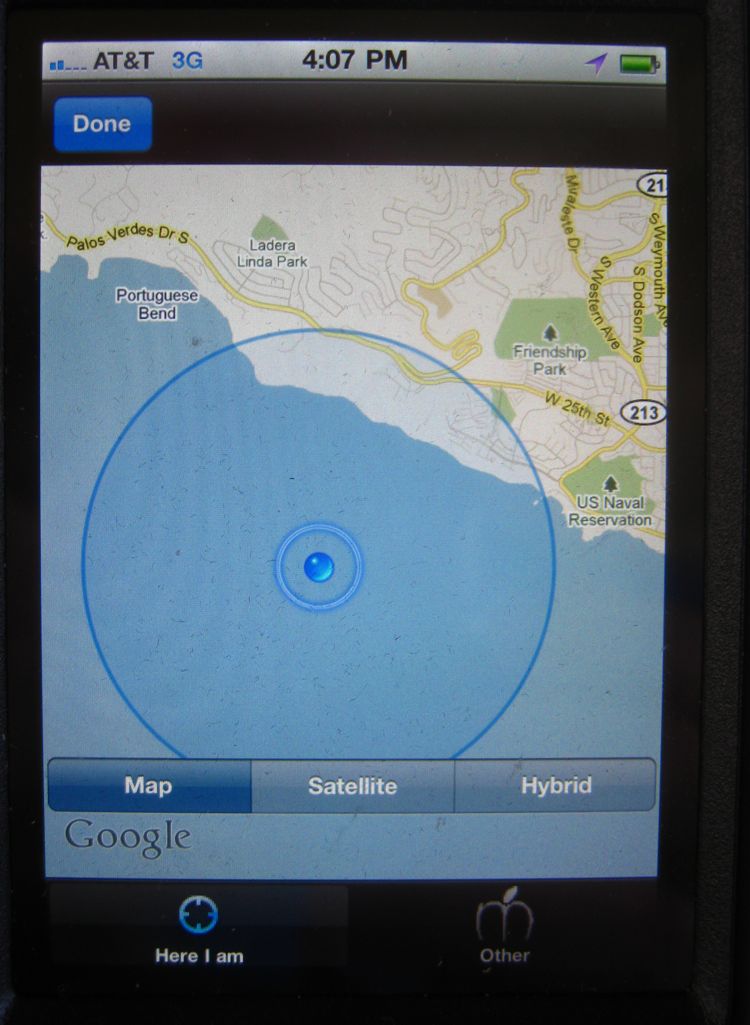
Thank you Mr. IPhone
Sea Life Become Visible
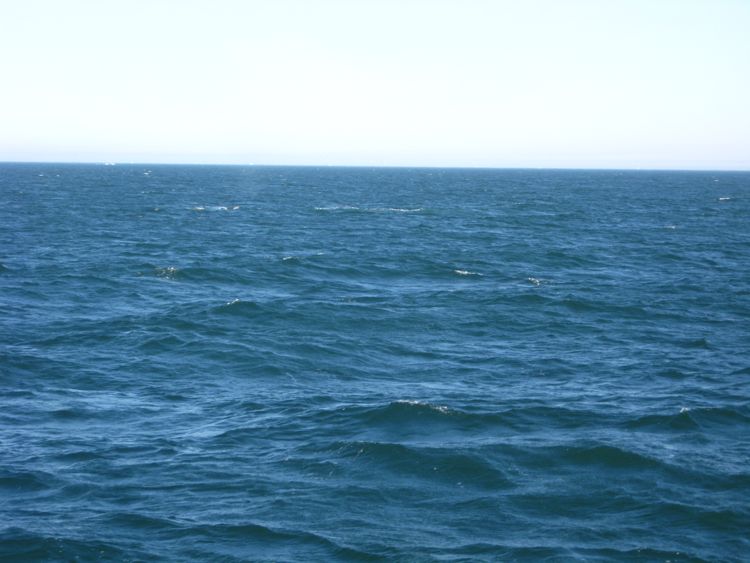
Look carefully for the spray
Did you know? - Whales breathe via blowholes; baleen whales have two and toothed whales have one. These are located on the top of the head, allowing the animal to remain mostly submerged whilst breathing. Breathing involves expelling excess water from the blowhole, forming an upward spout, followed by inhaling air into the lungs. Spout shapes differ among species and can help with identification.
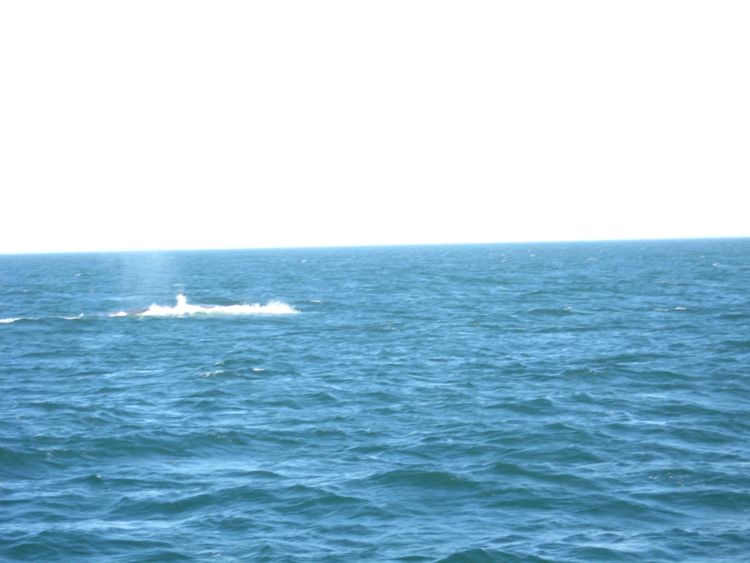
Thar she blows
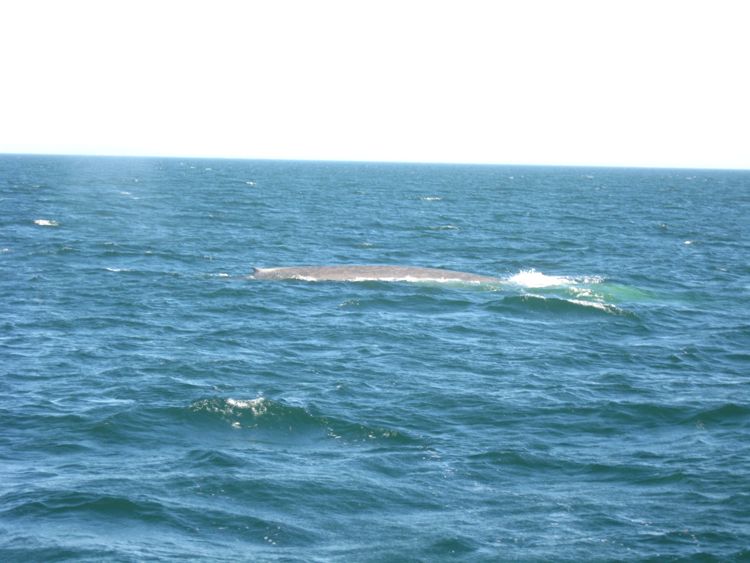
These guys are quite large